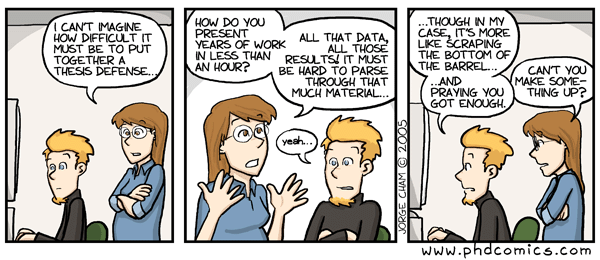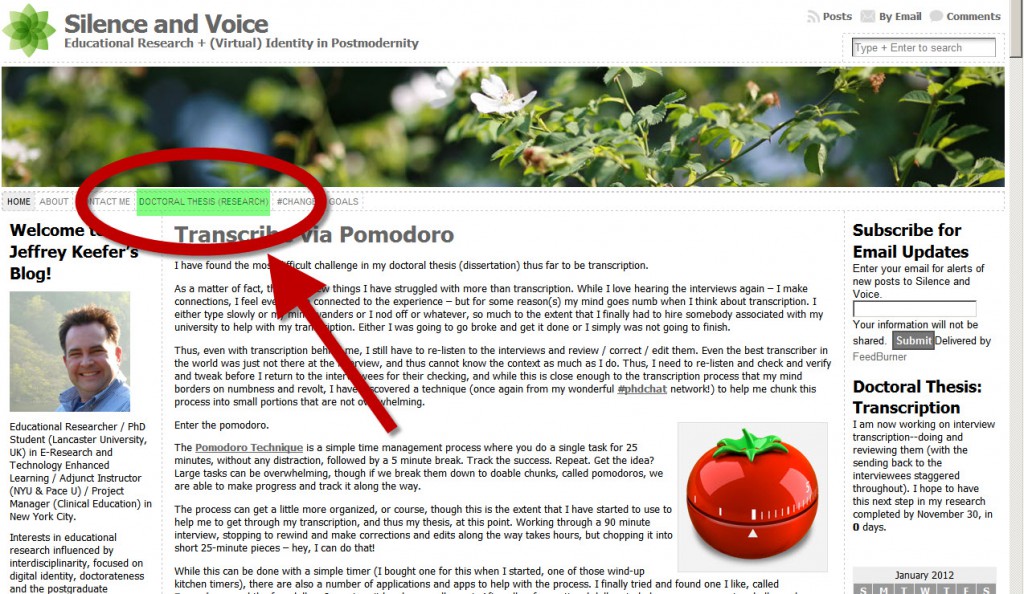Category: Academia
How can I “Acknowledge the Opposite” when Preparing to Teach? #fslt12
 As I am putting the final tweaks in my preparation for my 3-hour on-campus session of my Pace University course, NURS 840: Teaching and Learning in Advanced Practice Nursing, I am again pausing for a moment to explore and further develop my COWIL model (Consider the Opposite of What I Like) to better meet the needs for my students. Students who like what I like or think similarly as I do are already fine — I will meet their learning needs more easily as we are already approaching learning in a similar manner. The trick is being able to meet the needs of other students who don’t approach teaching and learning as I do. Yes, I can focus on my methods that already seem to work, but is that really taking them where they are and working with them? Is that really respecting some of their own interests?
As I am putting the final tweaks in my preparation for my 3-hour on-campus session of my Pace University course, NURS 840: Teaching and Learning in Advanced Practice Nursing, I am again pausing for a moment to explore and further develop my COWIL model (Consider the Opposite of What I Like) to better meet the needs for my students. Students who like what I like or think similarly as I do are already fine — I will meet their learning needs more easily as we are already approaching learning in a similar manner. The trick is being able to meet the needs of other students who don’t approach teaching and learning as I do. Yes, I can focus on my methods that already seem to work, but is that really taking them where they are and working with them? Is that really respecting some of their own interests?
I cannot consider the opposite unless I am clearer on what I like. While I did enough of that to get me started on this process, I want to turn my reflective attention to considering what I do not like, or to put it more gently, to more clearly articulate what does not resonate as much with me. To do so, I will reach out again to borrow from the work of Stephen Brookfield, this time his work around around the critical thinking process:
- Identify assumptions embedded in words & actions (discourses & systems)
- Assess grounds – evidence, accuracy & validity
- Take alternative perspectives – intersubjective understanding / perspective taking
- Take informed action / agency
While I am not seeking to critically think through things at this time, I do want to focus on the assumptions aspect, namely to identify those things I assume — those taken for granted beliefs about the world, and our place within it, that seem so obvious to us as not to need to be stated explicitly (again, from Brookfield).
As I see my COWIL model developing, I intentionally want to identify the things I assume are not the case about the world and my place in it, in this context teaching and learning, and explore if there is some way I can bring those things into my class as UNDOUBTEDLY there will be people who think differently enough that perhaps their needs may be met.
Let’s try a simple example I have in mind. I assume people learn by discussing (constructionist) and also by internally grappling with content based on personal experience. However, this assumption does not readily allow for watching videos and then discussing them (as I personally do not watch a lot of television, videos, movies or the like). However, in Considering the Opposite of What I Like (COWIL), perhaps I should try a video or two (like we try all things in class to see if they work for the learners, content, time, etc.) in the course.
Yes, this is a simple example that may not need a degree in education to see, but what better place to start than with something simple as I am exploring and fleshing out this model? After all, if a video or something more multimedia does not work, what has been lost? If nothing else, it becomes another teachable moment as the experience (consider actor-network theory) may more closely resonate with common learning approaches for some.
I will let you know what I find, though working through COWIL from the critical thinking frame to flesh out those assumptions can be quite useful.
Transcription Review is Complete!
 I am happy to say that yesterday I FINALLY completed the transcription review and editing step in my doctoral thesis research by sending the transcripts to my interviewees for member checking. The entire transcription and checking / editing the final transcript by relistening to the interviews again and making corrections has been the single longest part of my research to date, and I was only able to accomplish it through using the Pomodoro technique.
I am happy to say that yesterday I FINALLY completed the transcription review and editing step in my doctoral thesis research by sending the transcripts to my interviewees for member checking. The entire transcription and checking / editing the final transcript by relistening to the interviews again and making corrections has been the single longest part of my research to date, and I was only able to accomplish it through using the Pomodoro technique.
Previous experience has shown me, upon reflection, that the transcription-related step has always been my biggest hurdle, after which I tend to make consistent and steady progress (knock wood). I am glad that my interviewees (I have the best interviewees anybody could ever ask for!) have already started to reply that they received it (with even a few corrections, edits, additions, and clarifications). I am thus hoping to begin my formal analysis in about a month.
I am very thankful for the support of my interviewees and my research network; while I cannot mention many of you by name, I do thank you for your support.
Revised Doctoral Thesis (Research) Overview
I revised the overview / summary I keep on my website about my doctoral thesis, as had to write a summary of it and wanted to show a current sketch for where my work is at this time. You can find it in the DOCTORAL THESIS (RESEARCH) link above, as per the image.
Any feedback for it will be appreciated.
Transcribe via Pomodoro
As a matter of fact, there are few things I have struggled with more than transcription. While I love hearing the interviews again – I make connections, I feel even more connected to the experience – but for some reason(s) my mind goes numb when I think about transcription. I either type slowly or my mind wanders or I nod off or whatever, so much to the extent that I finally had to hire somebody associated with my university to help with my transcription. Either I was going to go broke and get it done or I simply was not going to finish.
Thus, even with transcription behind me, I still have to re-listen to the interviews and review / correct / edit them. Even the best transcriber in the world was just not there at the interview, and thus cannot know the context as much as I do. Thus, I need to re-listen and check and verify and tweak before I return to the interviewees for their checking, and while this is close enough to the transcription process that my mind borders on numbness and revolt, I have discovered a technique (once again from my wonderful #phdchat network!) to help me chunk this process into small portions that are not overwhelming.
 Enter the pomodoro.
Enter the pomodoro.
The Pomodoro Technique is a simple time management process where you do a single task for 25 minutes, without any distraction, followed by a 5 minute break. Track the success. Repeat. Get the idea? Large tasks can be overwhelming, though if we break them down to doable chunks, called pomodoros, we are able to make progress and track it along the way.
The process can get a little more organized, or course, though this is the extent that I have started to use to help me to get through my transcription, and thus my thesis, at this point. Working through a 90 minute interview, stopping to rewind and make corrections and edits along the way takes hours, but chopping it into short 25-minute pieces – hey, I can do that!
While this can be done with a simple timer (I bought one for this when I started, one of those wind-up kitchen timers), there are also a number of applications and apps to help with the process. I finally tried and found one I like, called Pomodoro, and the few dollars I spent on it has been well-spent. After all, a few optional dollars to help overcome a major challenge by helping to break it up into shorter bits of doable effort is OK in my book.
While pomodoros can be used for all sorts of tasks, it is simply another process tool to help increase efficiency (and simply finish). I am using it with success at this point, though can imagine its application being almost limitless (especially when surrounded by everything so interesting in social media and the internet!). After all, in the spirit of the #changee MOOC, doing something new and counter to how the mainstream does, can be useful indeed. Learning opportunities indeed do surround us!
BTW, I wrote this post in a pomodoro as a colleague asked me what it was!

